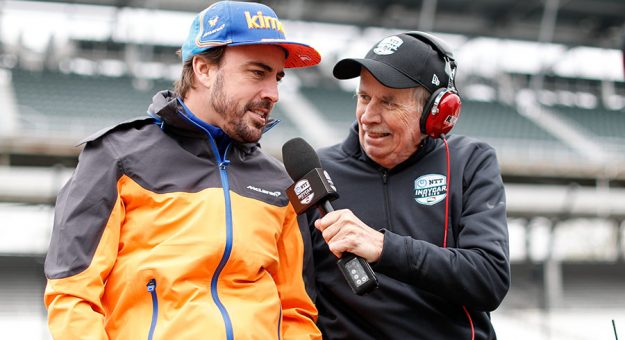INDIANAPOLIS — There was a lot to admire about Robin Miller.
From his one-of-a-kind, bigger-than-life personality, to his “no fear” attitude when it came to his profession, there was nobody quite like him.
Even in a world where technology has rendered the old-fashioned, daily newspaper a relic, Miller took pride in being a newspaperman. These were the journalists who did it the old-fashioned way, from taking high school football and basketball scores over the phone to crafting a few paragraphs to go into the next day’s paper.
That’s how Miller started his career at The Indianapolis Star in 1968 when he was still a teenager. Another youngster who was answering phones at Indiana’s largest newspaper was Bill Benner.
Miller and Benner both became columnists at The Star.
Before Miller achieved that promotion, however, he proved his skills as a newspaperman by interviewing subjects, reading his chicken scrawl handwriting out of a reporter’s notebook and banging out his story on a typewriter.
The computer ultimately replaced the typewriter, but Miller never replaced the reporter’s notebook with a tape recorder. His memory and knack for detail were very good.
In 1969, The Star needed a beat writer to cover the Indiana Pacers of the American Basketball Ass’n. They gave the beat to 19-year-old Miller and sent him out on the road along with Pacers coach Bobby “Slick” Leonard and star players Mel Daniels, Roger Brown and Bob Netolicky.
The skinny kid from the southside of Indianapolis quickly gained the trust of both the coach and the players and forged friendships that lasted a lifetime.
But Miller was also a “racer.”
It’s a revered term that the racing community uses to describe someone who is fearless and “gets it.”
Miller loved the Indianapolis 500 after attending his first 500 with his father, Bob, in the late 1950s.
Miller became hooked on the color, pageantry, drama, terror, excitement and even the sadness of the Indianapolis 500.
His favorite driver was Jim Hurtubise because he was unafraid to look danger in the eyes and not blink. At 18, Miller was hired as an unpaid “Stooge” on Hurtubise’s Indy 500 team, but that didn’t last long. Miller placed a can on Hurtubise’s freshly painted racing machine, ruining the paint job.
“I got fired from a job where I wasn’t getting paid,” Miller recalled.
Miller talked the management of The Indianapolis Star into letting him cover USAC and write a once-a-week column.
It didn’t matter that Miller flunked out of Ball State University in nearby Muncie, Ind., in 1971, because he already displayed the potential of being a great newspaperman.
Miller tried his luck as a race car driver himself in USAC midgets. He wasn’t bad, but he wasn’t great, either. After several bad crashes where Miller avoided serious injury, he focused his racing efforts on reporting and storytelling.
When it came to storytelling at the Indianapolis 500, there was none better than Miller. Perhaps the only other journalist who came close in the history of the world’s most famous racing venue was longtime SPEED SPORT editor Chris Economaki.
Both were loud and brash, but Economaki was from New Jersey. Miller was from Indiana. He was a Hoosier and the locals couldn’t get enough of what Miller had to say.
Miller took on A.J. Foyt at a time when some of his fellow drivers thought the racing legend was cheating. Miller wrote that and the angered Foyt punched Miller on pit lane at Indianapolis Motor Speedway.
Miller and Foyt became lifetime friends.
Miller even took on Indianapolis Motor Speedway President Tony George over the creation of the Indy Racing League during the mid-1990s. Miller believed a split with CART would destroy the sport and the two engaged in a public feud that lasted nearly two decades.
Miller never drank, but he loved to gamble. He also loved to criticize, including the new management that took over The Star. Unfortunately, much of his criticism was on The Star’s email server and Miller was fired Miller from the one job that he loved in 2001.
Miller was hired by ESPN and given a national platform. He would take that platform to SPEED TV, which showcased his personality and his biting tongue to new heights on “Wind Tunnel” with Dave Despain.
Miller was later hired by Racer Magazine and NBC.
But at his roots, Miller remained a newspaperman.
“God, I miss the newspaper business so much,” Miller once told me. “I miss the reporting, doing the layout, putting the paper together, calling sources. I still get to do that where I’m at now, but I miss the daily life of being a newspaper guy.”
He continued to be auto racing’s leading journalist until his final days as he battled multiple myeloma and leukemia. Miller was inducted into the Motorsports Hall of Fame on Aug. 13 at Indianapolis Motor Speedway.
Miller enjoyed three of the best days of his life that weekend in what he knew was probably his public farewell. Despite his ravaged body, he was sharp, he was witty and, most importantly, he was humble.
Just 10 days after his old Champ Car World Series pal A.J. Allmendinger won the NASCAR Cup Series race at Indianapolis, Miller died in Hospice on Aug. 25.
There will be a lot to miss about Robin Miller.
